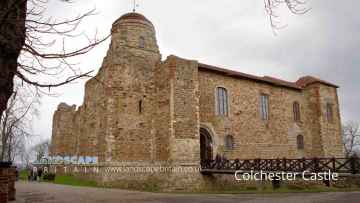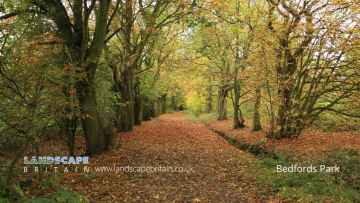Loughton - Essex
Loughton - Essex is a Town in the county of Essex.
There are great places to visit near Loughton - Essex including some great towns, castles, woodlands, airports, historic buildings, cities, villages, country parks, shopping centres, parks and nature reserves.
Loughton - Essex has some unmissable towns nearby like Colchester, Epping, Maldon, Southend-on-Sea, Saffron Walden, Braintree, and Basildon.
The area around Loughton - Essex's best castles can be found at Colchester Castle.
Loughton - Essex's best nearby woodlands can be found at Epping Forest, and Bedfords Park.
There are a number of airports near Loughton - Essex including London Southend Airport, and London Stansted Airport.
Audley End House and Gardens, and Chelmsford Cathedral are great places to visit near Loughton - Essex if you like historic buildings.
Chelmsford is a great place to visit close to Loughton - Essex if you like cities.
The area close to Loughton - Essex boasts some of the best villages including Hatfield Peverel.
The area around Loughton - Essex features a number of interesting country parks including Thorndon Country Park, and Hainault Forest Country Park.
Lakeside Shopping Centre is one of Loughton - Essex's best, nearby shopping centres to visit in Loughton - Essex.
There are a number of parks near to Loughton - Essex including Bedfords Park.
There are a number of nature reserves near to Loughton - Essex including Bedfords Park.
Loughton - Essex History
There are some historic monuments around Loughton - Essex:
Places to see near Loughton - Essex
History of Loughton - Essex
The settlement remained a small village until the early 17th century when the high road was extended north through the forest. The road quickly became the main route from London to Cambridge and East Anglia, and Loughton grew into an important stop with coaching inns. The most significant of the great houses of this period, built as country retreats for wealthy City merchants and courtiers, was Loughton Hall, owned by Mary Tudor two months before she became Queen Mary of England in 1553, and later by the Wroth family from 1578 to 1738. Sir Robert Wroth (c. 1576 - 1614) and his wife Lady Mary Wroth (1587 - c. 1652) entertained many of the great literary figures of the time, including Ben Jonson, at the house. It was rebuilt in 1878 by Revd. J. W. Maitland, whose family held the manor for much of the 19th century. It is now a Veecare Homes care home and is a grade II listed building. Loughton’s growth since Domesday has largely been at the expense of the forest. Expansion towards the River Roding was arrested owing to the often flooding marshy meadows, encroachments into the forest to the north and west of the village were nevertheless possible. Loughton landlords and villagers both exploited the forest waste (open spaces and scrub of the forest), but the trickle of forest destruction threatened to turn into a flood in the 19th century after royalty had lost interest in protecting the woodland as a hunting reserve. As the forest disappeared and landowners began enclosing more of it for private use, many began to express concern at the loss of such a significant natural resource and common land. Some Loughton villagers defied landowners to practice their ancient right to lop wooa series of court cases, including one brought by the Loughton labourer Thomas Willingale, was needed before the City of London Corporation took legal action against the landowners’ enclosures, resulting in the Epping Forest Act of 1878 which preserved the forest for use by the public. The arrival of the railway spurred on the town’s development. The railway first came to Loughton in 1856 when the Eastern Counties Railway, (later the Great Eastern Railway), opened a branch line via Woodford. In 1948 the line was electrified and transferred to London Transport to become part of the Central line on the London Underground. The arrival of the railway also provided visitors from London with a convenient means of reaching Epping Forest and thus transforming it into the “East Enders’ Playground”. The Ragged School Union began organising visits to the forest for parties of poor East End children in 1891 paid for by the Pearsons Fresh Air Fund. Loughton artist Octavius Dixie Deacon depicted many scenes of the town including some of its residents during the late Victorian period.























